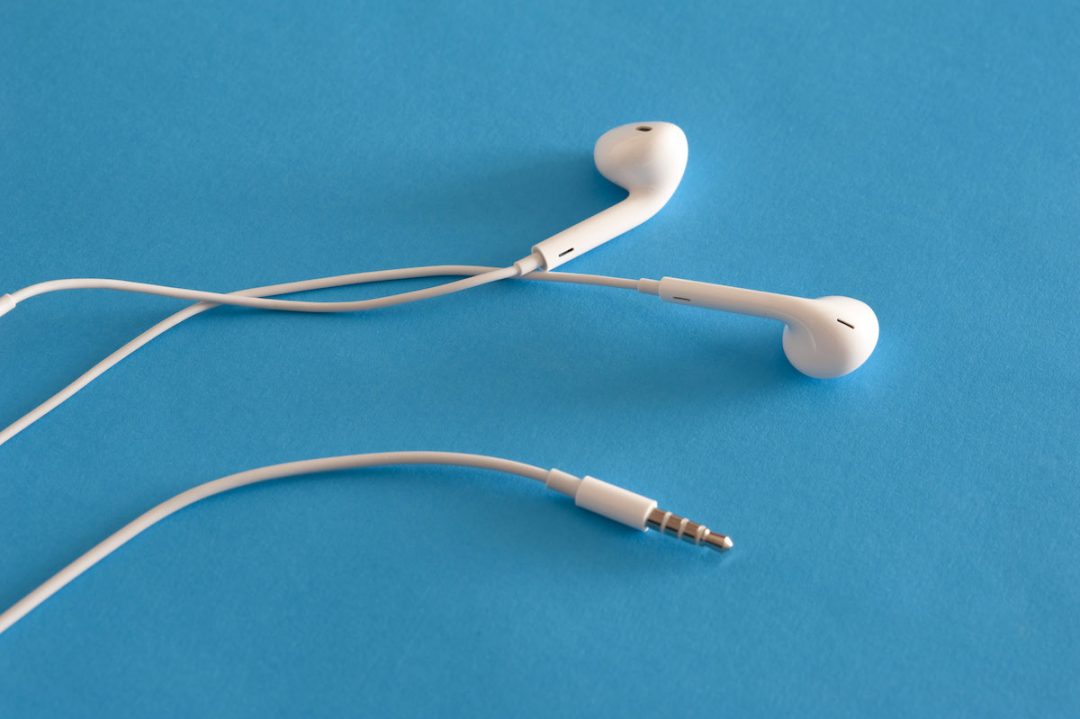Technology moves fast these days. Everyone has a personal listening device in their pocket, and with those come a slew of choices for how to get that sound to your ears. IEM (short for in-ear monitors) vs earbuds appear fairly similar at first glance; however, they differ in design and even types of usage.
IEM vs Earbuds: How Are They Similar?
Both IEM and earbuds are a style of headphone that inserts the driver (speaker) directly into the wearer’s ears. They differ from traditional over-the-ear headphones you’d typically reserve for the studio, where the drivers are considerably larger and cover the listener’s entire ear.
Apple’s popular wireless AirPods are a type of earbud, as are the wired sets that come with an iPhone. Most consumers own some style of IEM or earbud, whether they’re using them with their mobile device, a laptop, or even for gaming. While IEM and earbuds certainly share similar qualities, the latter tend to be what most people recognize. What are the differences between IEM vs earbuds, then?
IEM (In-Ear Monitors)
In-ear monitors are a professional style of earbud. IEM fit snuggly inside the ear canal, forming a seal from outside sound much like an earplug. This creates isolation from the outside environment for a more immersive and detailed listening experience. The majority of IEM come with replaceable foam or silicone tips in a variety of sizes, so anyone can find the right fit for their ears.
The isolation IEM provide may be disorienting to some; especially those who are only accustomed to regular earbuds. However, this is one of the biggest advantages IEM offer. Because they provide such excellent isolation, many professional touring musicians use in-ear monitors while performing. Each member of the group can have a custom headphone mix sent to their IEM. In some cases, the isolation leaves the performers a bit too far removed from the audience. A FOH or monitor engineer can set up audience microphones to capture the sound of the crowd and send them directly to the musician’s IEM mix.
You can snag a pair of IEM off the shelf, like the popular Shure SE215s, but many professional users have custom in-ears made. Custom IEM take a mold of the person’s ears and craft a form-fitting piece specifically for them. These provide optimal comfort, isolation, and sound quality (and can be very expensive!).
Earbuds
While roughly the same size as most standard IEM, earbuds do not fit inside the ear canal. Instead, they rest on the outer portion of the inner ear. Because of this, the fit is looser, and earbuds do not form a seal for noise isolation. Earbuds are almost exclusively marketed towards casual consumers, and most of them are inexpensive—free, even, with smart phones and other devices.
Some people prefer the looser fit of earbuds over IEM. Many earbuds also come manufactured with in-line controls for volume, answering phone calls, skipping songs, etc. IEM made for musicians obviously lack these features since they’re made for a different purpose altogether. Unfortunately, though, most earbuds come one-size-fits-all and are even made out of hard plastic that stands no chance at conforming to someone’s specific ear. While not always the most comfortable, earbuds are at least affordable.
Which Is Better? IEM vs Earbuds
It really depends on intended usage. We talked about the earbuds that come with iPhones earlier, which are perfectly adequate for taking calls, doing some casual listening out and about or around the house, or for exercising. The sound quality is nothing to write home about, and neither is the comfort—but for a free pair of earbuds to get a little more use out of your mobile device, they do a fine job. Most cheap earbuds you’d find in this category simply get the job done.
IEM, on the other hand, would beat earbuds in just about any significant category. Fit is comfier thanks to swappable tips, and the isolation provides a higher quality listening experience at lower volumes than buds—when outside noise seeps in, you find yourself driving up the volume to potentially harmful levels and still not getting the detail you want out of your music. IEM remedy that. While most earbuds contain one driver, IEM typically contain multiple drivers for different ranges of the frequency spectrum. In short, better sound quality.
If you’re serious about isolation and sound quality, and prefer the earbud-style over regular headphones, IEM are easily the way to go. For anything casual, a cheap pair of earbuds that are at least moderately comfortable are just fine.
Conclusion
IEM vs earbuds can be boiled down to fit. In-ear monitors, as the name suggests, fit further into the ear than standard earbuds, creating a partial noise-isolating seal. Earbuds gently rest inside the outer part of the ear and do not create a seal from outside noise.
In the past, most audio professionals would tell you IEM are made for the stage or studio, but that’s not entirely the case anymore. Companies make multi-driver IEM for casual use; sometimes they’re just marketed as ‘earbuds’ rather than in-ear headphones or monitors. It really just depends on how they fit!
IEM, whether designed for musicians or the average consumer, provide an overall better experience than standard earbuds.
